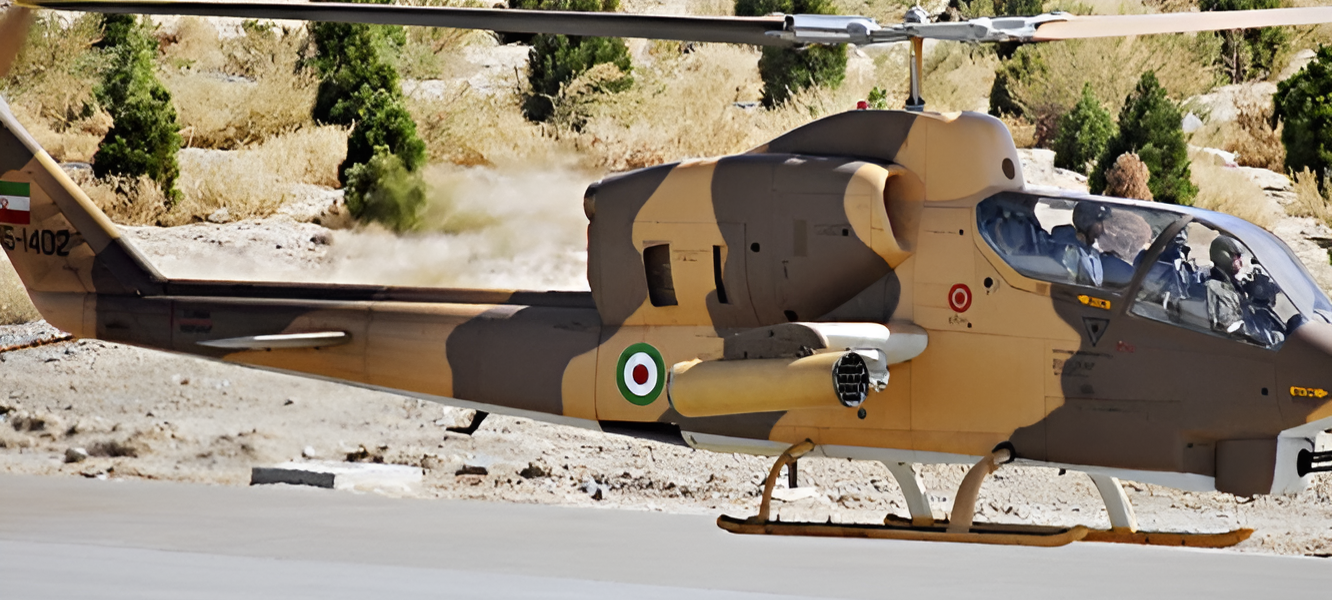A Game-Changer for Iran: Russian Mi-28 Attack Helicopters Poised for Delivery to the Revolutionary Guard Corps?

As Russia strengthens its ties with Iran across multiple domains, particularly in defense, a new speculation has surfaced: Iran may soon acquire Russian attack helicopters, potentially the Mi-28, to modernize its aging rotary-wing fleet. This move comes after the announcement that Iran’s Air Force is set to receive Russian Su-35S fighter jets by March 2024, signaling a broader arms deal that could reshape Iran’s military capabilities.
For decades, Iran’s attack helicopter fleet has been one of the most outdated in the region. Its approximately 50 AH-1J Cobra helicopters, purchased from the United States in the 1970s, are relics of the Vietnam War era. Though Iran has supplemented its fleet with Soviet-era Mi-171 transport helicopters, its combat capabilities remain limited. As Tehran seeks to modernize its military infrastructure, Russian attack helicopters such as the Mi-28 and Ka-52 represent significant upgrades that could enhance Iran’s strike capabilities on multiple fronts.
Iran’s familiarity with Russian attack helicopters comes from its operations in Syria, where Iranian forces have coordinated with Russian military units that deployed the Mi-24, Mi-28, and Ka-52 during counterinsurgency operations. This cooperation has given Iranian military planners valuable insight into the capabilities of Russian helicopters. Additionally, Iranian drone forces have been integrated with Russian military operations, creating a strong foundation for deeper defense cooperation.
Among the modern Russian attack helicopters, the Mi-28 stands out as the more likely candidate for Iran’s future fleet. Known for its remarkable flight performance, the Mi-28 can carry up to 16 anti-tank missiles or 80 unguided rockets, making it highly effective in ground support roles. The latest Mi-28NM variant, which has been employed in Syria and in Ukraine, benefits from upgraded engines, enhanced sensors, and a new fire control system, offering improvements in speed and targeting precision. Furthermore, the Mi-28’s ability to carry R-74 infrared-guided air-to-air missiles, along with its high maneuverability, makes it a potent adversary in close-range aerial combat.
The Mi-28’s features are especially valuable for Iran, which faces both internal and external security challenges. The helicopter would be ideal for counterinsurgency operations, where its versatility and firepower would provide critical support to Iranian forces. Additionally, the Mi-28 could be deployed in regional operations, such as in Iraq, where Iranian forces have deep involvement. Its ability to operate in a variety of environments would make it a game-changer for Iran’s military strategy.
A crucial aspect of this potential acquisition is which branch of Iran’s armed forces would operate the Mi-28. While the Iranian Air Force and Army both require modern attack helicopters, the Revolutionary Guard Corps (IRGC) may be the most logical recipient. The IRGC, which has been responsible for Iran’s military operations in Iraq and Syria, has a larger, more loyal, and better-funded force than the regular Army. It already operates a range of advanced equipment, including ballistic missiles and drones, and has a limited but important helicopter fleet. With the IRGC’s growing prominence in both domestic and foreign operations, it could greatly benefit from integrating Mi-28 attack helicopters into its arsenal.
If the IRGC is prioritized for these new assets, it would mark a significant shift in the operational dynamics of Iran’s military. The IRGC’s ability to integrate advanced attack helicopters like the Mi-28 would enhance its effectiveness in both counterinsurgency missions and regional military engagements, offering Iran a more robust defense posture.
In conclusion, the prospect of Russian Mi-28 attack helicopters for Iran represents a pivotal development in the ongoing strengthening of military ties between Russia and Iran. With the acquisition of Su-35 fighter jets already confirmed, the addition of Mi-28 helicopters could be the next logical step in Iran’s defense modernization efforts. Whether for the IRGC or the Army, the Mi-28 would significantly bolster Iran’s military capabilities, providing it with a powerful asset for both domestic security and regional operations.



